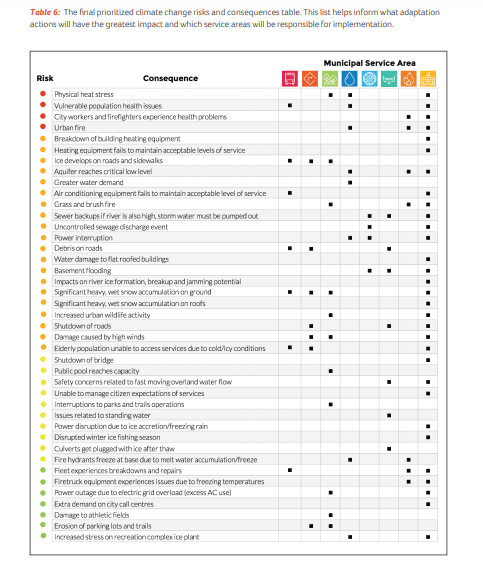Understanding and Assessing Impacts
In developing the CCAS, the City of Selkirk partnered with local climatologists and climate change adaptation experts at the University of Winnipeg’s PCC. The PCC’s evidence-based approach – combining climate data, community-based research, and digital storytelling – follows the best practices in climate adaptation and communications. Climatic risks facing the community of Selkirk differ seasonally, and include extended and possibly more severe storm season, very hot temperatures, polar vortex ‘cold snap’ events, heat waves, longer, more persistent droughts, heavier rainfall events, heavier, wet snowfalls, freezing rain events, rain on snow events, winter thaw events, and a loss of insulating snow. The CCAS identifies some of the likely impacts that climate change will have on municipal service delivery for the City of Selkirk and undertakes impact and risk assessment processes in order to identify the top risks to the community. The PCC was responsible for developing and facilitating a series of workshops, which brought together the local knowledge of the City’s staff with that of climate experts to develop a robust and collaborative understanding of how climate change will likely affect Selkirk’s municipal service delivery. By systematically assessing how Selkirk’s municipality and service delivery will likely be affected by climate change, the CCAS and associated adaptation actions have a factual basis, clear goals, appropriate policy responses, and can be monitored and evaluated.
